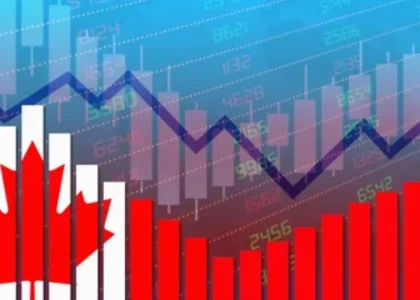Unveiling the Impact: Mortgage Interest Emerges as a Key Driver of Inflation
Inflation, the silent force reshaping our economic landscape, has recently been propelled by an unexpected contender: mortgage interest rates. As economies navigate through turbulent times, understanding this intricate relationship between mortgage interest and inflation becomes crucial. This article delves into the nuances of how mortgage interest rates influence inflation, the broader economic implications, and what it means for consumers and policymakers alike.
The Genesis of Inflation:
To comprehend the role of mortgage interest in inflation, let’s first grasp the essence of inflation itself. Inflation refers to the general increase in prices of goods and services over time, eroding the purchasing power of money. It’s a complex interplay of various factors, including monetary policy, consumer demand, and supply chain dynamics.
The Mortgage Interest Conundrum:

Traditionally, inflation was predominantly driven by factors like energy prices, food costs, and currency fluctuations. However, in recent years, mortgage interest rates have stealthily emerged as a significant player in this economic equation. The linkage between mortgage rates and inflation is intricate yet profound.
Mortgage Interest Now One Of The Biggest Drivers Of Inflation: Unraveling the Link:
At its core, the relationship between mortgage interest rates and inflation is rooted in the housing market’s influence on consumer spending. When mortgage rates rise, the cost of borrowing increases, leading to a decline in home purchases and investments. Consequently, consumers have less disposable income, dampening overall spending and economic growth.
Mortgage Interest Now One Of The Biggest Drivers Of Inflation: The Fed’s Role:

The Federal Reserve, the central banking system of the United States, plays a pivotal role in shaping mortgage interest rates and, by extension, inflation. Through its monetary policy tools, such as interest rate adjustments and quantitative easing, the Fed aims to maintain stable prices and maximum employment. However, the ripple effects of these policies often extend beyond their intended targets.
Impact on Consumer Behavior:
For the average consumer, fluctuations in mortgage interest rates can have far-reaching consequences. Higher rates translate to increased monthly mortgage payments, squeezing household budgets and limiting discretionary spending. This, in turn, can curtail economic activity and amplify inflationary pressures.
Real Estate Dynamics:

Beyond its direct impact on consumers, the nexus between mortgage rates and inflation reverberates throughout the real estate sector. Rising interest rates typically deter homebuyers and investors, leading to a slowdown in housing market activity. This slowdown can trigger a cascade of effects, affecting construction, employment, and related industries.
Mortgage Interest Now One Of The Biggest Drivers Of Inflation: Global Implications:

The interconnectedness of financial markets means that changes in mortgage interest rates in one country can reverberate globally. In a world where economies are increasingly interdependent, fluctuations in mortgage rates can spill over borders, influencing exchange rates, capital flows, and inflationary trends worldwide.
Mortgage Interest Now One Of The Biggest Drivers Of Inflation: Policy Responses:
In response to mounting inflationary pressures fueled by rising mortgage rates, policymakers face a delicate balancing act. Tightening monetary policy too aggressively can risk stifling economic growth, while lax measures may exacerbate inflationary trends. Finding the optimal policy response requires a nuanced understanding of the underlying dynamics at play.
Navigating Uncertain Waters:

As mortgage interest rates continue to fluctuate amid evolving economic conditions, stakeholders must adopt a proactive approach to navigate these uncertain waters. From homeowners to investors to policymakers, staying informed and adaptable is paramount in mitigating risks and capitalizing on opportunities.
Mortgage Interest Now One Of The Biggest Drivers Of Inflation: Consumer Strategies:
For homeowners and prospective buyers, navigating fluctuating mortgage rates requires careful planning and foresight. Exploring fixed-rate mortgage options or refinancing existing loans during periods of low interest rates can provide stability amidst market volatility. Additionally, building a robust financial cushion can help cushion the impact of future rate hikes.
Investment Considerations:

Investors keen on tapping into the real estate market amidst inflationary pressures must exercise prudence and diligence. Conducting thorough market research, diversifying investment portfolios, and staying attuned to macroeconomic indicators can help mitigate risks and capitalize on emerging opportunities.
Mortgage Interest Now One Of The Biggest Drivers Of Inflation: The Road Ahead:
As we chart a course through the murky waters of inflationary pressures driven by mortgage interest rates, one thing remains clear: adaptability is key. By fostering a deep understanding of the underlying dynamics and embracing a proactive mindset, individuals and economies alike can weather the storm and emerge stronger on the other side.
Mortgage Interest Now One Of The Biggest Drivers Of Inflation: Conclusion:
In the intricate dance of economics, mortgage interest rates have emerged as a formidable force shaping inflationary trends. By unraveling the complexities of this relationship and embracing informed strategies, stakeholders can navigate through uncertainty and harness opportunities for growth and resilience in a rapidly changing world.
Click here for more visited Posts!




